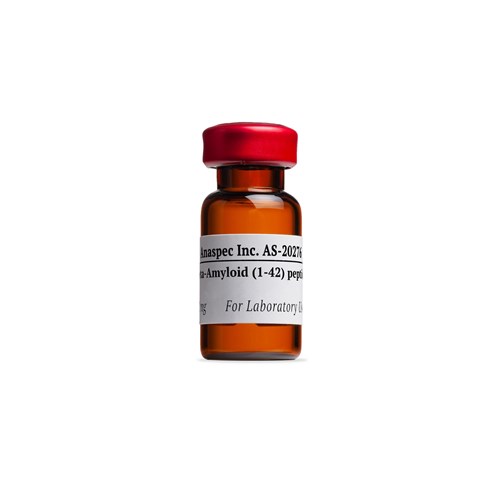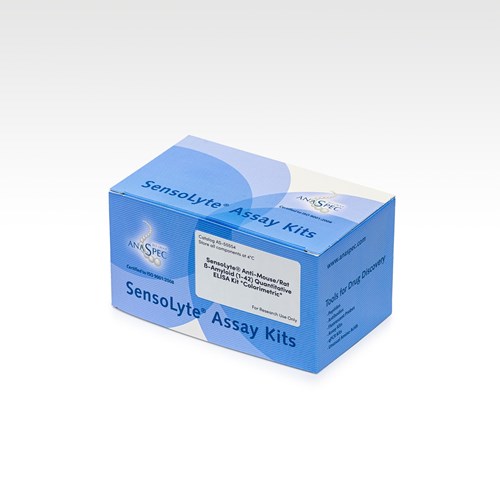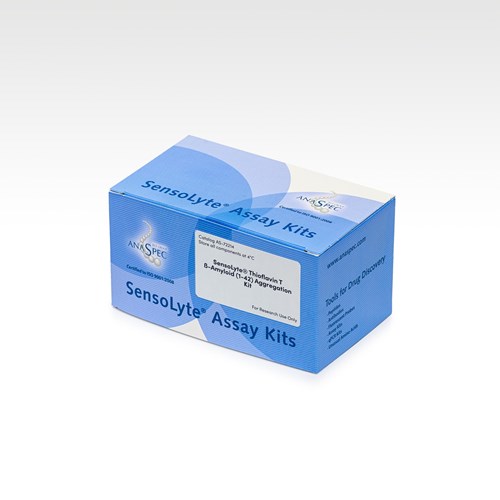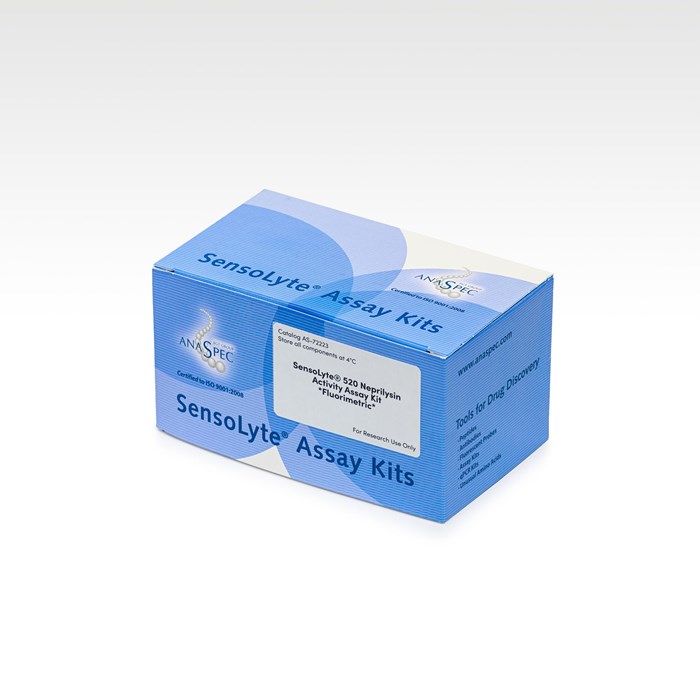SensoLyte® 520 Neprilysin Activity Assay Kit Fluorimetric - 1 kit
- Cat.Number : AS-72223
- Manufacturer Ref. :
-
Availability :
In stock
- Shipping conditions : Ice fees will apply
Neprilysin (NEP) is a transmembrane metallopeptidase normally expressed by a variety of tissues. It is also known as neutral endopeptidase, and enkephalinase. NEP cleaves peptides at the N-terminal side of hydrophobic amino acid residues and is responsible for the degradation and inactivation of a variety of physiological substrates. NEP is a major extracellular amyloid beta-peptide degrading enzyme in the brain and targeting NEP is considered a potential therapeutic strategy for the prevention and treatment of Alzheimer's disease. NEP has also been implicated in the pathogenesis of hypertension, diabetes, and cancer.
The SensoLyte® 520 Neprilysin Assay Kit employs a novel internally quenched 5-FAM/QXL™ FRET substrate for the detection of neprilysin activity. The enzyme cleaves the FRET substrate into two separate fragments resulting in the release of 5-FAM fluorescence, which can be monitored at excitation /emission= 490/520 nm. The long wavelength fluorescence of 5-FAM is less interfered by the autofluorescence of components in biological samples and test compounds. The assay can detect as low as 0.78 ng/mL of active neprilysin.
Specifications
| Packaging | |
| Kits components |
|
|---|---|
| Chemistry | |
| UniProt number |
|
| Properties | |
| Absorbance (nm) |
|
| Emission (nm) |
|
| Storage & stability | |
| Storage Conditions |
|
| Activity | |
| Application | |
| Biomarker Target | |
| Detection Method | |
| Detection Limit |
|
| Research Area | |
| Sub-category Research Area | |
| Usage |
|
| Source | |
| Host | |
Downloads
You may also be interested in the following product(s)


SensoLyte® Anti-Mouse/Rat ß-Amyloid (1-42) Quantitative ELISA Kit Colorimetric - 1 kit

SensoLyte® Thioflavin T ß-Amyloid (1-42) Aggregation Kit - 1 kit
Citations
Microglia prevent beta-amyloid plaque formation in the early stage of an Alzheimer’s disease mouse model with suppression of glymphatic clearance
Alzheimers Res Ther. . 2020 Oct 02 ; 12 125 | DOI : 10.1186/s13195-020-00688-1
- W. Feng
- et al
Reduction of Abeta amyloid pathology in APPPS1 transgenic mice in the absence of gut microbiota
Sci Rep . 2017 Feb 08 ; 7 41802 | DOI : https://doi.org/10.1038/srep41802
- T. Harach
- et al
Effect of hyperglycemia and rosiglitazone on renal and urinary neprilysin in db/db diabetic mice
Physiol Rep . 2020 Feb 05 ; 8(3) e14364 | DOI : 10.14814/phy2.14364.
- LF. Alawi
- et al
Enzyme-digested Colla Corii Asini (E’jiao) prevents hydrogen peroxide-induced cell death and accelerates amyloid beta clearance in neuronal-like PC12 cells
Neural Regen Res . 2020 Dec 01 ; 15(12) 2270 | DOI : 10.4103/1673-5374.285000
- L. Xiao
- et al
Placental Syncytiotrophoblast-Derived Extracellular Vesicles Carry Active NEP (Neprilysin) and Are Increased in Preeclampsia
Hypertension . 2019 Apr 01 ; 73 1112 | DOI : 10.1161/HYPERTENSIONAHA.119.12707
- M. Gill
- et al
Somatostatin slows Aβ plaque deposition in aged APPNL-F/NL-F mice by blocking Aβ aggregation
Sci Rep . 2023 Feb 09 ; 13 2337 | DOI : https://doi.org/10.1038/s41598-023-29559-z
- D. Williams
- et al

